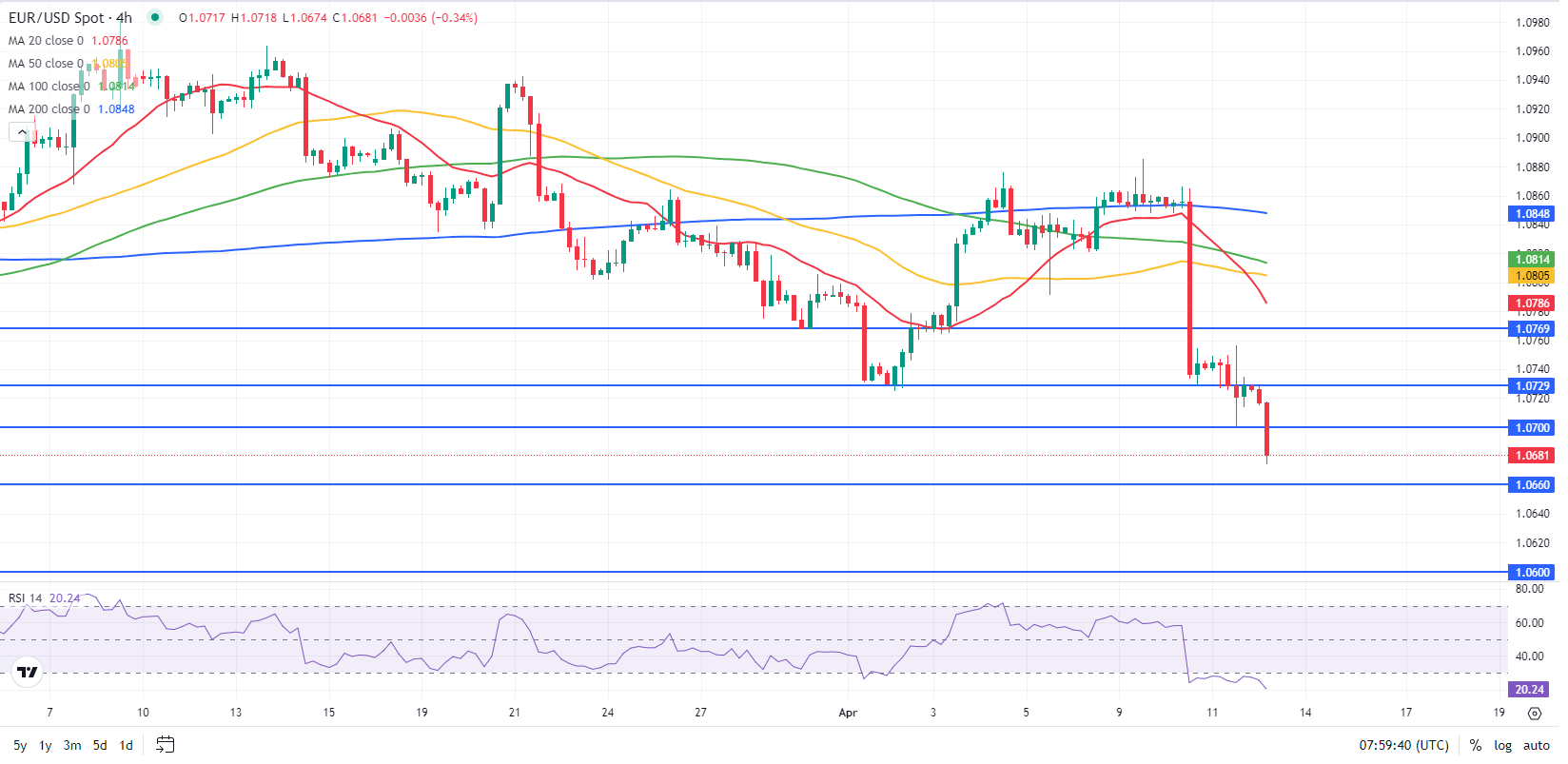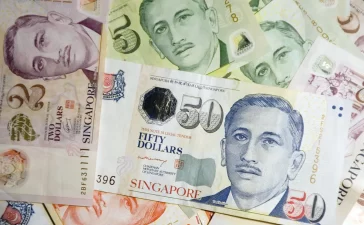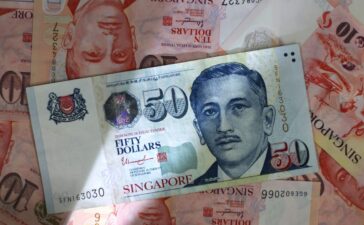- EUR/USD slumped to a fresh 2024-low below 1.0700.
- Dovish comments from ECB officials weigh on the Euro.
- The USD preserves its strength as markets expect a further delay in the Fed policy pivot.
EUR/USD came under renewed bearish pressure and dropped to its lowest level since November below 1.0700. Although the pair’s technical outlook points to oversold conditions, it might be risky to bet on a Euro rebound amid diverging European Central Bank (ECB) and Federal Reserve (Fed) monetary policies.
The ECB left key rates unchanged as expected following the April policy meeting. ECB President Christine Lagarde reiterated the data-dependent approach to policy and refrained from confirming a rate cut in June. Nevertheless, citing three sources, Reuters reported that ECB policymakers were still expecting a rate cut in June.
Meanwhile, Governing Council member Yannis Stournaras said that he supports the divergence from the Fed’s policies and called for four ECB rate cuts in 2024. Additionally, ECB policymaker Madis Muller noted that there were signs of the economy strengthening and added that slower inflation had raised the chances of a reduction in key rates in June.
Euro price this week
The table below shows the percentage change of Euro (EUR) against listed major currencies this week. Euro was the weakest against the US Dollar.
| USD | EUR | GBP | CAD | AUD | JPY | NZD | CHF | |
| USD | 1.38% | 0.87% | 0.88% | 0.80% | 1.01% | 0.39% | 1.02% | |
| EUR | -1.37% | -0.49% | -0.48% | -0.59% | -0.34% | -0.97% | -0.34% | |
| GBP | -0.88% | 0.52% | 0.02% | -0.07% | 0.16% | -0.49% | 0.15% | |
| CAD | -0.88% | 0.49% | -0.02% | -0.07% | 0.15% | -0.50% | 0.13% | |
| AUD | -0.81% | 0.60% | 0.06% | 0.08% | 0.24% | -0.41% | 0.19% | |
| JPY | -1.03% | 0.37% | -0.13% | -0.13% | -0.25% | -0.61% | 0.02% | |
| NZD | -0.39% | 0.98% | 0.48% | 0.50% | 0.38% | 0.64% | 0.62% | |
| CHF | -1.01% | 0.37% | -0.15% | -0.13% | -0.23% | 0.01% | -0.64% |
The heat map shows percentage changes of major currencies against each other. The base currency is picked from the left column, while the quote currency is picked from the top row. For example, if you pick the Euro from the left column and move along the horizontal line to the Japanese Yen, the percentage change displayed in the box will represent EUR (base)/JPY (quote).
On the other hand, market participants see a nearly 80% probability that the Fed interest rate will remain unchanged at 5.25%-5.5% after the June policy meeting. Richmond Fed President Thomas Barkin said on Thursday that the latest inflation data did not increase his confidence that disinflation is spreading in the economy.
EUR/USD Technical Analysis
The Relative Strength Index (RSI) indicator on the 4-hour chart dropped to 20, highlighting oversold conditions in the near term.
1.0700 (static level, former 2024-low support) aligns as first resistance for EUR/USD. In case the pair stabilizes above that level, 1.0730 (static level) and 1.0770 (static level) could be seen as next hurdles.
On the downside, 1.0660 (static level from November) could be seen as next support before 1.0600 (psychological level) and 1.0550 (static level from October).
Euro FAQs
The Euro is the currency for the 20 European Union countries that belong to the Eurozone. It is the second most heavily traded currency in the world behind the US Dollar. In 2022, it accounted for 31% of all foreign exchange transactions, with an average daily turnover of over $2.2 trillion a day. EUR/USD is the most heavily traded currency pair in the world, accounting for an estimated 30% off all transactions, followed by EUR/JPY (4%), EUR/GBP (3%) and EUR/AUD (2%).
The European Central Bank (ECB) in Frankfurt, Germany, is the reserve bank for the Eurozone. The ECB sets interest rates and manages monetary policy. The ECB’s primary mandate is to maintain price stability, which means either controlling inflation or stimulating growth. Its primary tool is the raising or lowering of interest rates. Relatively high interest rates – or the expectation of higher rates – will usually benefit the Euro and vice versa. The ECB Governing Council makes monetary policy decisions at meetings held eight times a year. Decisions are made by heads of the Eurozone national banks and six permanent members, including the President of the ECB, Christine Lagarde.
Eurozone inflation data, measured by the Harmonized Index of Consumer Prices (HICP), is an important econometric for the Euro. If inflation rises more than expected, especially if above the ECB’s 2% target, it obliges the ECB to raise interest rates to bring it back under control. Relatively high interest rates compared to its counterparts will usually benefit the Euro, as it makes the region more attractive as a place for global investors to park their money.
Data releases gauge the health of the economy and can impact on the Euro. Indicators such as GDP, Manufacturing and Services PMIs, employment, and consumer sentiment surveys can all influence the direction of the single currency. A strong economy is good for the Euro. Not only does it attract more foreign investment but it may encourage the ECB to put up interest rates, which will directly strengthen the Euro. Otherwise, if economic data is weak, the Euro is likely to fall. Economic data for the four largest economies in the euro area (Germany, France, Italy and Spain) are especially significant, as they account for 75% of the Eurozone’s economy.
Another significant data release for the Euro is the Trade Balance. This indicator measures the difference between what a country earns from its exports and what it spends on imports over a given period. If a country produces highly sought after exports then its currency will gain in value purely from the extra demand created from foreign buyers seeking to purchase these goods. Therefore, a positive net Trade Balance strengthens a currency and vice versa for a negative balance.

















